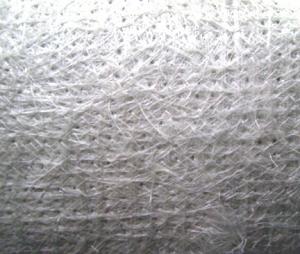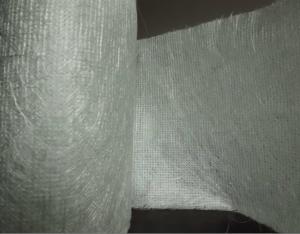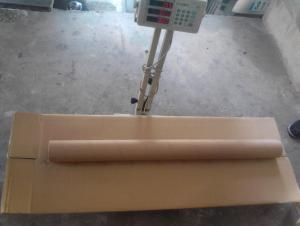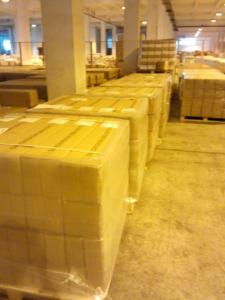E-GLASS Stitch Combo Mat- EMK
- Loading Port:
- China Main Port
- Payment Terms:
- TT or LC
- Min Order Qty:
- 1000 kg
- Supply Capability:
- -
OKorder Service Pledge
OKorder Financial Service
You Might Also Like
DESCRIPTION
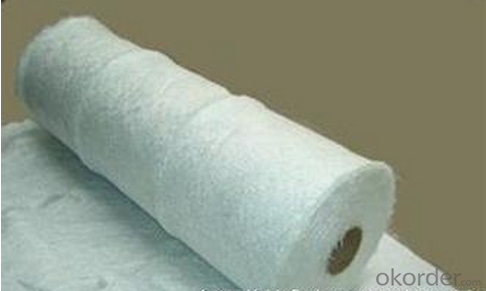
E-glass stitched combo mat consists of two or more layers of fiber glass rovings which arestitch-bonded. one layer of rovings and differene layers of rovings can beoriented differently and have different linear density. the rovingspecification, number of roving layers, mat width and roll diameter can becustomized as per requirement.

SPECIFICATIONS
| Product No | Overall Density | Woven Roving Density | Chop Density | Polyester Yarn Density |
| BH-ESM1808 | 896.14 | 612 | 274.64 | 9.5 |
| BH-ESM1810 | 926.65 | 612 | 305.15 | 9.5 |
| BH-ESM1815 | 1080.44 | 612 | 457.73 | 10.71 |
| BH-ESM2408 | 1132.35 | 847 | 274.64 | 10.71 |
| BH-ESM2410 | 1162.86 | 847 | 305.15 | 10.71 |
| BH-ESM2415 | 1315.44 | 847 | 457.73 | 10.71 |
APPLICATION:
Emulsion Chopped Strand Mat is mainly applied to unsaturated polyester ,viny ester and epoxyresins. The product is most widely used in hand lay-up process and also can be used in filament winding. compression molding and continuous laminating processes. The typical end products including various panels, boats,bath equipment automotive parts and cooling towers
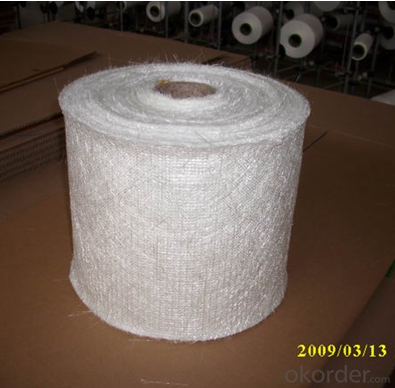
PACKAGE:
fiberglassstitched mat is wound onto paper tube and then wrapped up with plasticfilm, which can be packed in a cardboad box or kraft paper.the rolls are to behorizontallyplaced. rolls can be loaded into container diretly or on pallets.
FAQ:
1.What is the delivery time ?
15days after receiving the deposit
2.Are you a trading company or factory.
We are factory,and we have more than 10 years of experience.
- Q:What are the different weaves of fiberglass fabric?
- There are several different weaves of fiberglass fabric, including plain weave, twill weave, satin weave, leno weave, and basket weave.
- Q:Are fiberglass fabrics resistant to static electricity?
- Yes, fiberglass fabrics are inherently resistant to static electricity.
- Q:What type of needle is used for sewing fiberglass fabric?
- A heavy-duty needle is the common type used for sewing fiberglass fabric. Its design is specifically made to endure the abrasive nature of fiberglass, featuring a sharp point and a thick shaft to penetrate the dense fibers of the fabric. Manufacturers typically construct it using robust materials such as stainless steel or titanium, guaranteeing its resistance to breakage or bending during the sewing process. Moreover, some sewers may opt for a needle coated with Teflon to minimize friction and prevent the fiberglass fabric from adhering to the needle. In summary, the use of a heavy-duty needle is vital when sewing fiberglass fabric to ensure successful stitching through the resilient fibers without causing any harm or breakage.
- Q:Are fiberglass fabrics resistant to UV degradation when exposed to outdoor sunlight?
- Yes, fiberglass fabrics are generally resistant to UV degradation when exposed to outdoor sunlight. The fiberglass material is inherently UV resistant and does not easily degrade or deteriorate when exposed to sunlight. This makes fiberglass fabrics a reliable choice for outdoor applications where UV exposure is a concern.
- Q:How do fiberglass fabrics perform in terms of stretch or elasticity?
- Fiberglass fabrics do not possess significant stretch or elasticity compared to other fabrics. Due to their composition of glass fibers, they tend to be rigid and stiff. This lack of stretch or elasticity makes fiberglass fabrics ideal for applications where dimensional stability and resistance to stretching are desired, such as in the construction industry for reinforcing materials or in the manufacturing of composites. However, if stretch or elasticity is a requirement for a specific application, other fabric options like spandex or elastane would be more suitable.
- Q:Do fiberglass fabrics have any electrical conductivity properties?
- No, fiberglass fabrics do not have any electrical conductivity properties.
- Q:What are the different finishing options available for fiberglass fabric?
- Fiberglass fabric offers various finishing options, each with distinct properties and uses. One prevalent choice involves applying a resin or polymer coating to the fabric, which boosts its strength and durability, rendering it more tear and abrasion resistant. This coating also offers additional safeguards against chemicals, UV rays, and moisture. Another option is to laminate the fiberglass fabric with different materials, like foam or felt, resulting in a composite fabric. This combination incorporates the fiberglass's strength and flexibility with the unique properties of the laminated material. This proves beneficial for applications requiring insulation, cushioning, or sound absorption. Furthermore, fiberglass fabric can undergo treatment with a fire retardant finish. This treatment reduces the fabric's flammability, making it suitable for environments where fire safety is a concern. Some fiberglass fabrics are also available with a silicone or PTFE (polytetrafluoroethylene) finish. These finishes enhance the fabric's heat resistance and provide a non-stick surface that is easy to clean. Consequently, they are ideal for insulation blankets, conveyor belts, or release liners. To summarize, fiberglass fabric can be finished with resin or polymer coatings, lamination with other materials, fire retardant treatments, or silicone or PTFE finishes. The choice of finishing option depends on the specific requirements of the application, such as strength, durability, heat resistance, or fire safety.
- Q:Is fiberglass fabric suitable for use in aerospace interiors?
- Yes, fiberglass fabric is suitable for use in aerospace interiors. It is lightweight, strong, fire-resistant, and offers excellent insulation properties. Additionally, it is durable and has low maintenance requirements, making it an ideal choice for various applications in the aerospace industry.
- Q:Can fiberglass fabric be used for reinforcement in chemical processing tanks?
- Yes, fiberglass fabric can be used for reinforcement in chemical processing tanks. Fiberglass is highly resistant to corrosion and can withstand a wide range of chemicals, making it an ideal material for reinforcing tanks in chemical processing industries. It is lightweight, durable, and has excellent mechanical properties, making it suitable for withstanding the harsh conditions of chemical processing.
- Q:How is fiberglass fabric used in the manufacturing of sports equipment?
- Due to its unique properties and advantages, fiberglass fabric is widely utilized in the production of sports equipment. One of its primary uses in this industry is for reinforcement purposes. By layering and combining the fabric with resin, a lightweight yet sturdy composite material is created. In the manufacturing of sports equipment like tennis rackets, golf clubs, and hockey sticks, fiberglass fabric is employed to enhance strength and stiffness. This involves layering and bonding the fabric with other materials, such as carbon fiber, to form a composite structure with excellent flexural strength and impact resistance. As a result, athletes can achieve greater power and control during their performance. Furthermore, fiberglass fabric is also incorporated into the production of protective gear for various sports. Helmets, shin guards, and body armor often feature this fabric due to its ability to absorb and distribute impact energy. With its high tensile strength and tear resistance, fiberglass fabric ensures the safety of athletes during high-contact sports. Moreover, fiberglass fabric is utilized in the manufacturing of sports equipment that requires waterproof or weather-resistant properties. For instance, sailboards, canoes, and kayaks incorporate the fabric to provide a protective layer against water penetration. This enhances the equipment's durability and longevity, enabling athletes to use them in different weather conditions without compromising performance. In conclusion, fiberglass fabric plays a vital role in the production of sports equipment by providing reinforcement, enhancing strength and durability, ensuring athlete safety, and enabling weather resistance. Its versatile properties make it an essential component in a wide range of sports gear, contributing to better performance, protection, and overall enjoyment for athletes worldwide.
1. Manufacturer Overview |
|
|---|---|
| Location | |
| Year Established | |
| Annual Output Value | |
| Main Markets | |
| Company Certifications | |
2. Manufacturer Certificates |
|
|---|---|
| a) Certification Name | |
| Range | |
| Reference | |
| Validity Period | |
3. Manufacturer Capability |
|
|---|---|
| a)Trade Capacity | |
| Nearest Port | |
| Export Percentage | |
| No.of Employees in Trade Department | |
| Language Spoken: | |
| b)Factory Information | |
| Factory Size: | |
| No. of Production Lines | |
| Contract Manufacturing | |
| Product Price Range | |
Send your message to us
E-GLASS Stitch Combo Mat- EMK
- Loading Port:
- China Main Port
- Payment Terms:
- TT or LC
- Min Order Qty:
- 1000 kg
- Supply Capability:
- -
OKorder Service Pledge
OKorder Financial Service
Similar products
New products
Hot products
Related keywords
